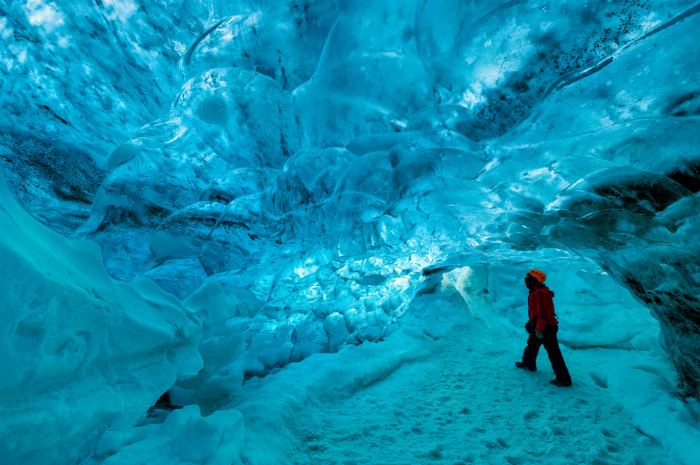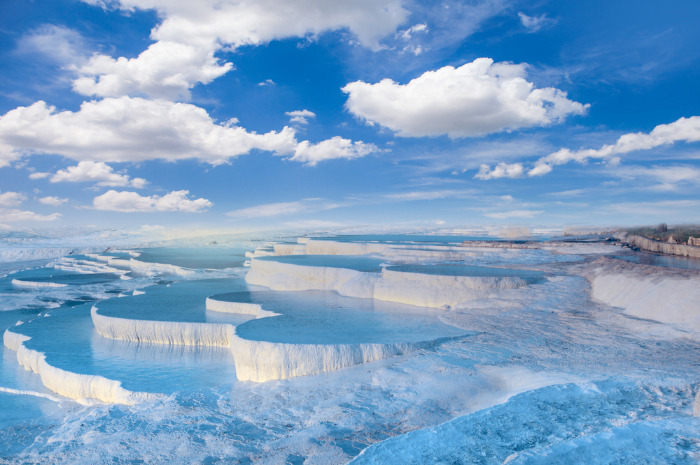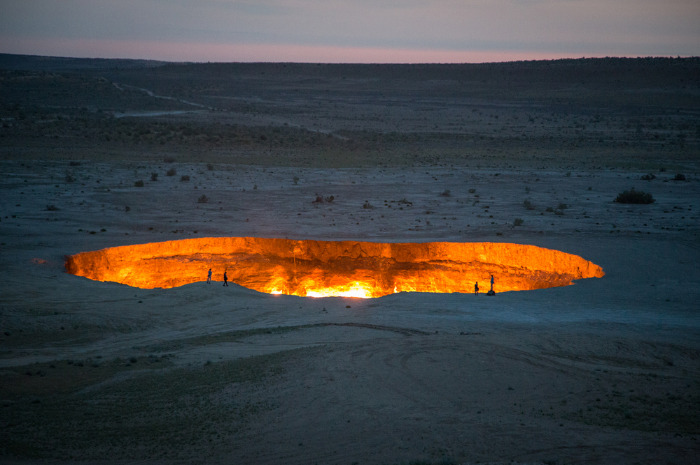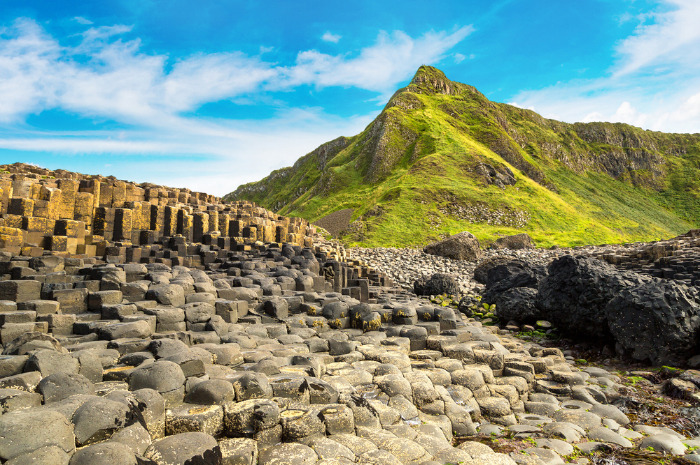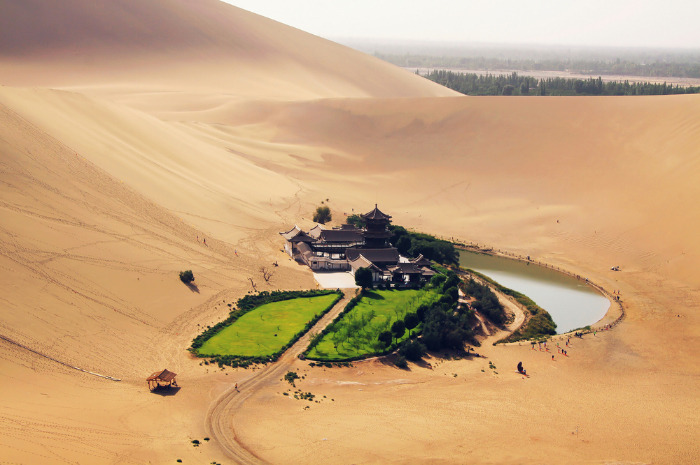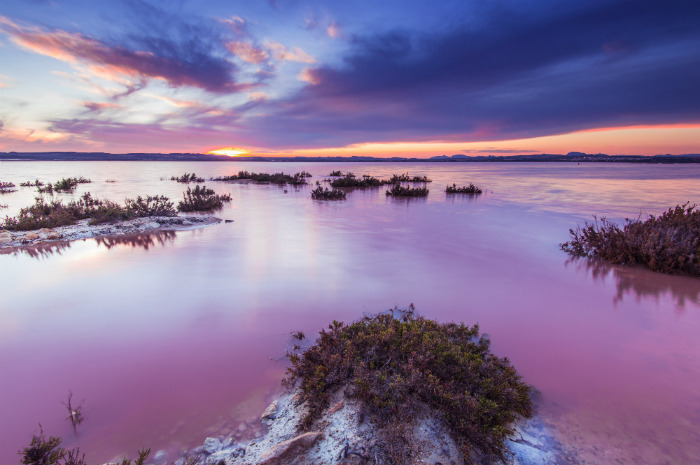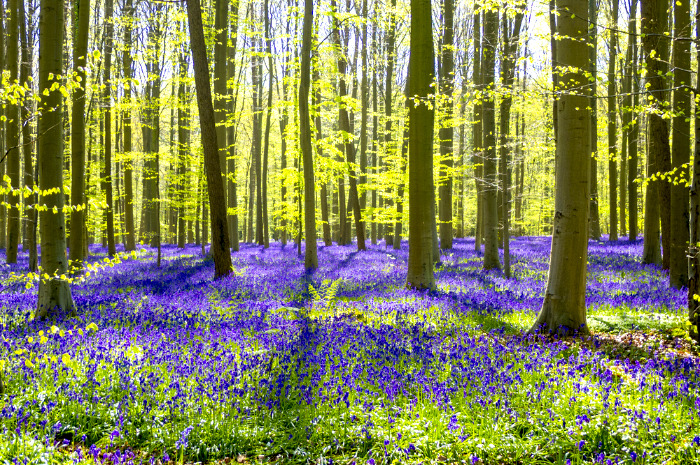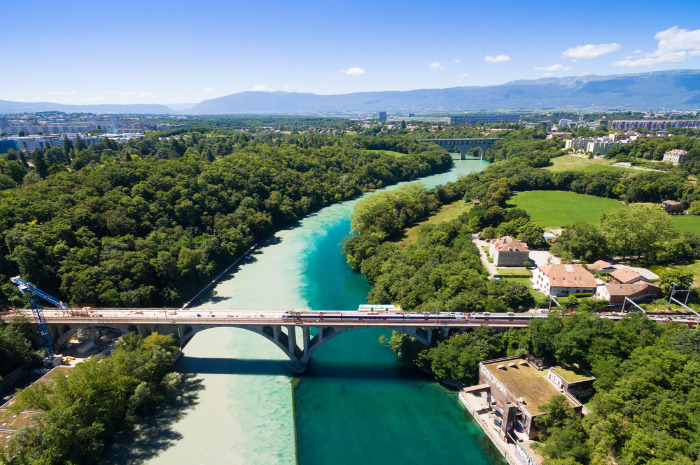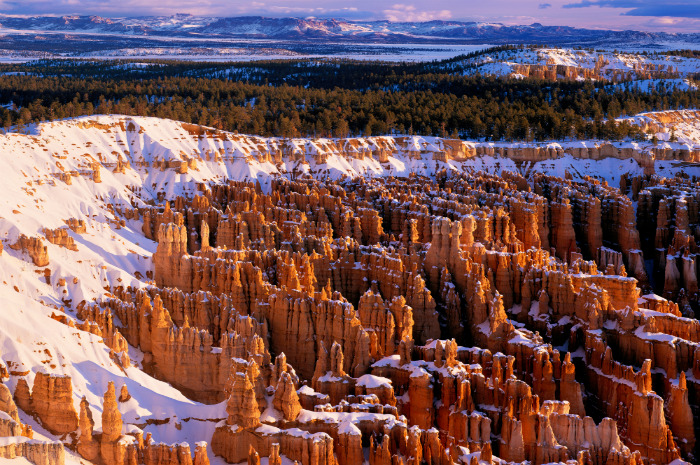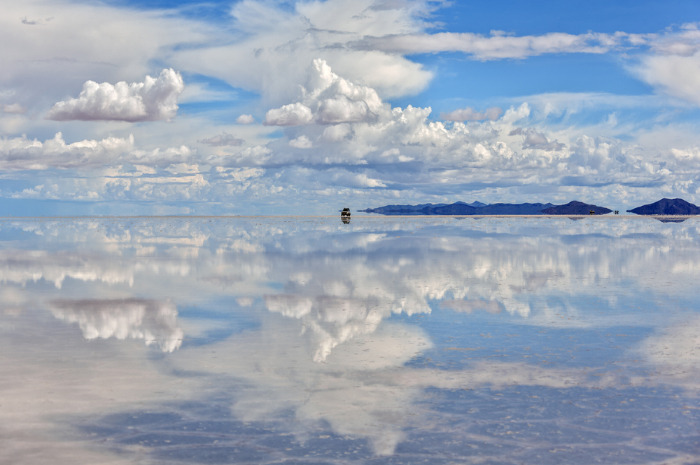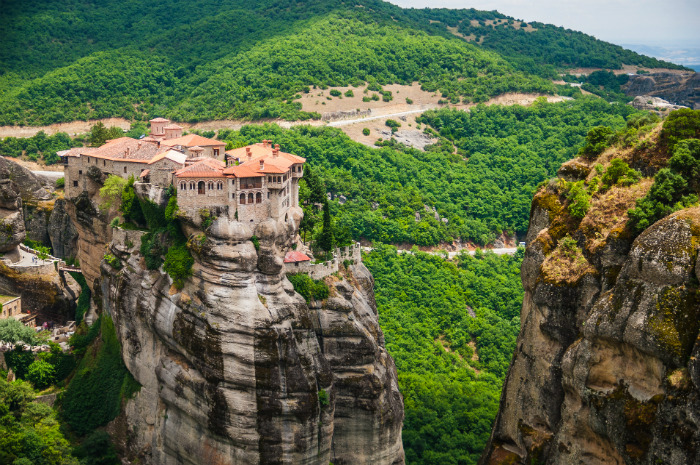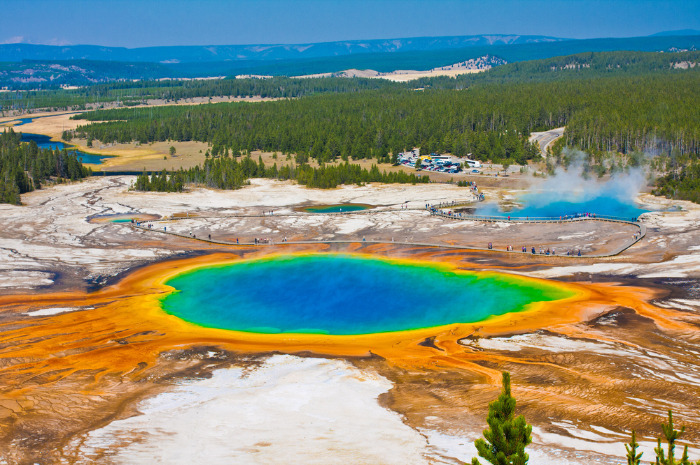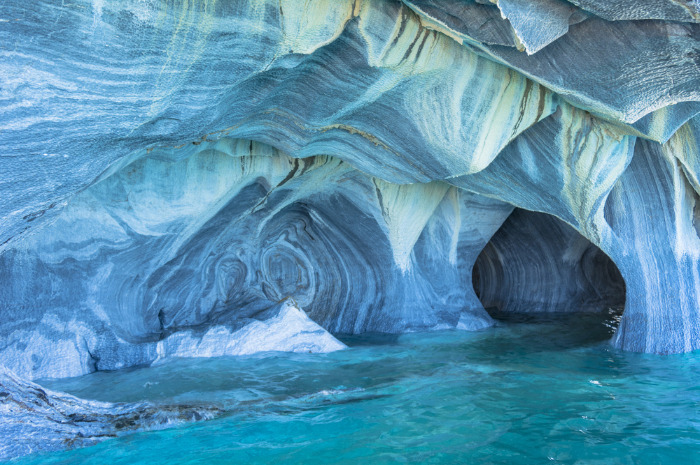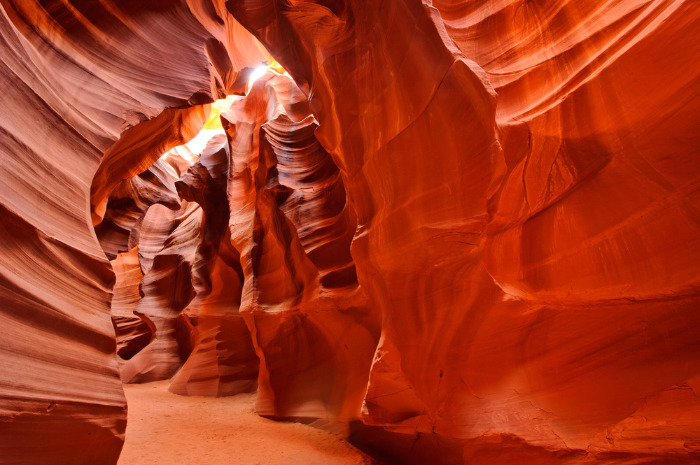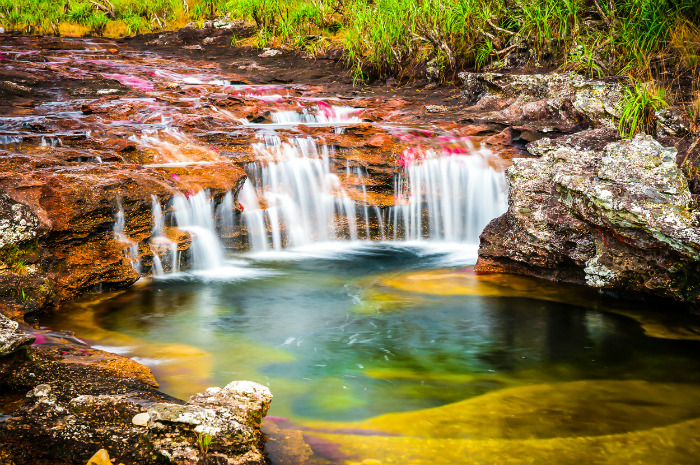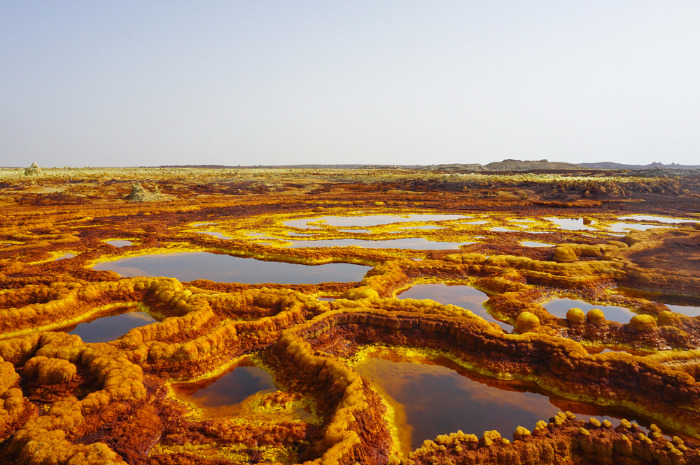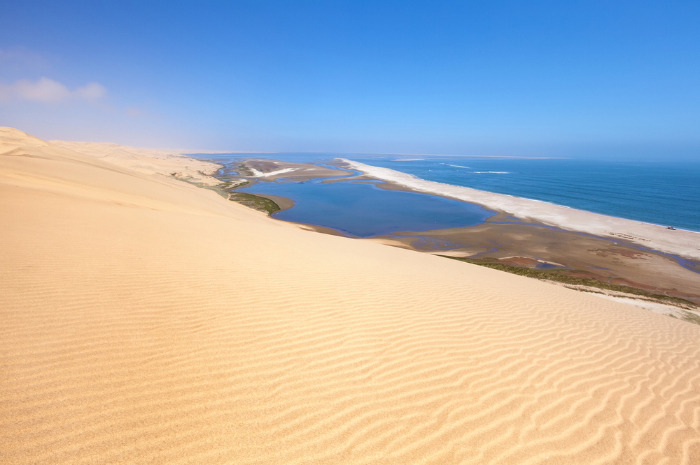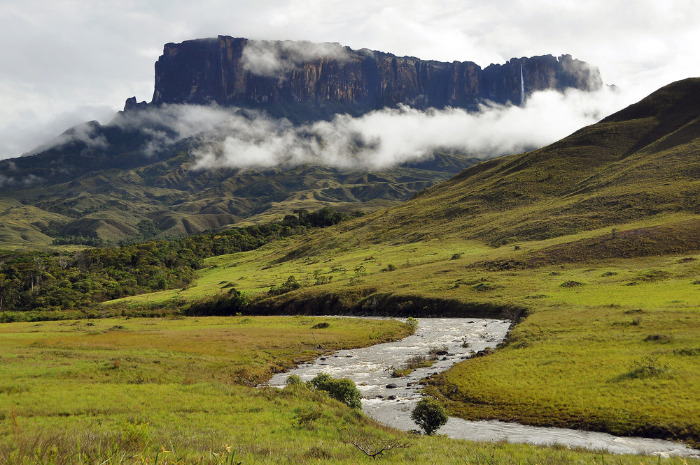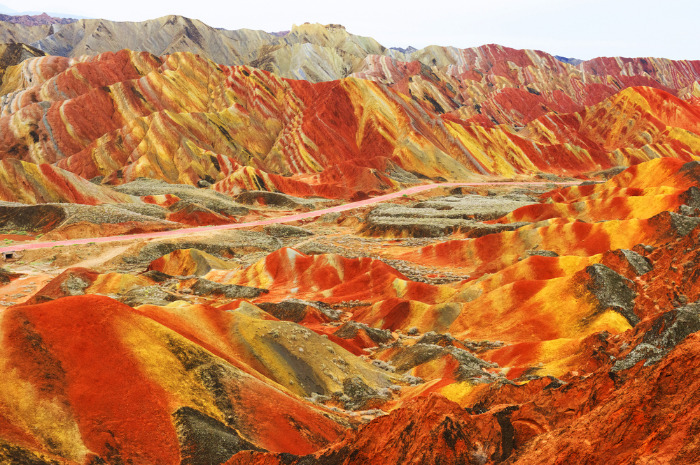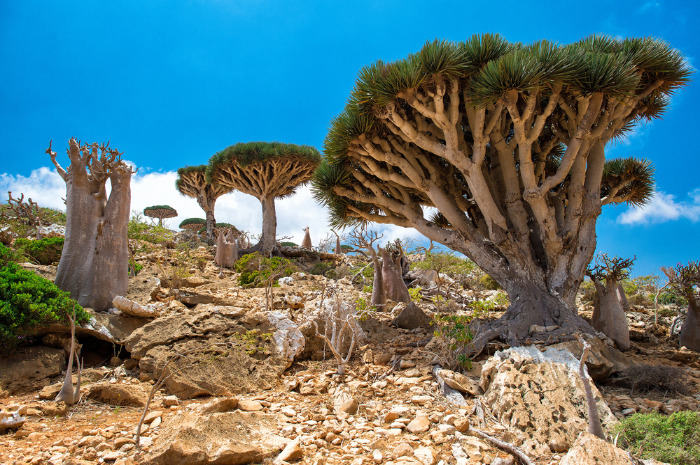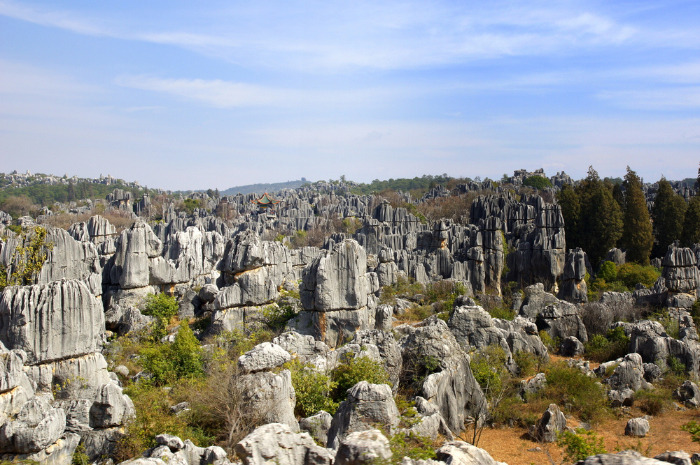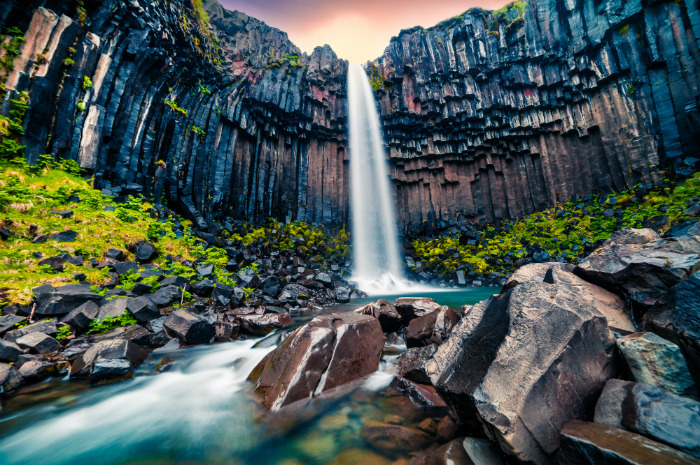The Most Surreal Places To Travel To Around The World
The world is home to an abundance curious and often inexplicable places and formations. Some have been slowly created over the course of thousands of years and others are man-made. Whatever the case, they are not to be missed. Jaw-dropping, otherworldly places actually exist. Mother Nature shows off her artistic and dreamlike qualities.
Pamukkale, Turkey
Pamukkale is a hillside of cascading terraces, or steps, made of carbonate deposits from flowing water. There are 17 pools, which began to form 400,000 years ago, originating from natural hot springs in the area, and the water temperatures range from 95 to 212 F. The pools are not immediately at risk but the thousands of swimmers who visit pollute the water.
Door to Hell, Turkmenistan
This is one of the most mysterious places on Earth. More than 40 years ago, a gaping, fiery crater opened up in the desert of northern Turkmenistan, most likely after a drilling mishap, according to the National Geographic. The Darvaza Crater, known as the Door to Hell, is still burning. Rumor has it that Soviet scientists set it on fire to burn off noxious gases after the ground but underestimated the amount of fuel that lay below. Turkmenistan has the sixth largest natural gas reserves in the world.
Giant’s Causeway, Northern Ireland
Most people just go to Ireland, but its northern neighbor has a lot to offer. Giant's Causeway is a natural wonder on the northern coast. It features 40,000 interlocking basalt columns, which came from a volcanic eruption.
The Crescent Lake, Gobi Desert
Have you ever heard of spring in a desert? It sounds impossible but this is what's happening there. The Crescent Lake is surrounded by the Echoing-Sand Mountain, according to Travel China Guide. The golden sand hill and the blue lake cast a gorgeous contrast in a harmonious existence. Just as its name implies, the lake appears like a crescent moon and with its crystal clear water, resembles a turquoise or pearl inlaid in the vast desert.
Las Salinas de Torrevieja, Spain
This is one of the most spectacular pink lakes in the world. The color is caused by the presence of salt-loving archaea Halobacterium and Dunaliella salina, a single living organism that can exist in water with a high salt concentration, according to Spain Holiday. Tourists and visitors enjoy seeing the Flamingos. About 2,000 of them can be seen on the lake during the breeding season.
Hallerbos, Belgium
Go there in the spring, in the middle of April, when the hike is one of the most beautiful on the planet. There is a good reason why it's called "The Blue Forest." It is the most important and most extensive forest area between Zenne and Zoniën. This is one of the most popular attractions for tourists due to the regal purple carpet of bluebells.
Rhone and Arve rivers junction, Switzerland
This is a unique place where the rivers Rhône and Arve are joining. It creates a stunning and quite extraordinary natural phenomenon. Both rivers have different colors of water and when joining, their waters are mixing and shuffling and joining together into the one final river, Rhône, according to Gneeva.info. Southern River Arve, which is faster, is almost milky white, while the northern river, Rhône, is slower and darker.
Hoodoos in Bryce Canyon National Park, Utah
They are many photographs' favorite. The wilderness of the park and otherworldly rock spires lure more than a million visitors every year. This is where hoodoos and forest are mixed together. Hoodoos are pillars of rock that have been left standing due to erosion. You may have seen something similar in Turkey's Cappadocia region, or Australia's Pinnacles Desert, but nowhere have you seen them like this.
Salar de Uyuni salt flats, Bolivia
Formed as a result of transformations between many prehistoric lakes, Salar de Uyuni is the world's largest salt flat. Because of the large, flat area and clear skies, it is often used for calibrating altimeters of Earth observation satellites. It also creates a dream-like reflection off of the crust. Stay at Palacio de Sal, a hotel made of ice. Even the furniture in the hotel is made of salt. The rooms look like igloos built with salt blocks.
Meteora, Greece
Christians used to go to the monastery for absolute isolation, peace and harmony, according to Visit Meteora. The massive rocks are perched at a maximum height of 1,200 feet. This place is a phenomenon of vast monolithic pillars and hills that have formed enormous rounded boulders. They are mystical yet serene and breathtaking.
Grand Prismatic Spring, Wyoming
This is the largest hot spring in the country and third largest in the world, measuring 250 by 300 feet wide and 160 feet deep. The color of the water is due to pigmented bacteria and microbial mats that grow along the edges of the water. The pool is fed by an underground spring that pumps out an estimated 560 gallons of 160ºF water per minute.
Marble Caves, Patagonia, Chile
Out in the turquoise waters of General Carrera Lake sits 5,000 million tons of marble, elegantly shaped by nature into caves. Viewing them in person is a far more beautiful experience than looking at any photo, but getting there is more difficult than you can imagine. After a series of flights into the city of Coyhaique, you'll need to drive another 200 miles and then board a boat, which will get you to the caves.
Antelope Canyon, Arizona
Antelope Canyon is one of the most photographed canyons in the American Southwest. It is made up of two canyons. The upper is approximately 4,000 feet in elevation. When the sunlight shines in the colors of the canyon, they appear to vibrate off of the walls. The canyon, which is 120 feet deep and 2,000 feet long, looks red, gold and orange.
Caño Cristales River, Colombia
Known as "The River of Five Colors" or "The Liquid Rainbow," this South American landmark shows its brilliant hues between the wet and dry seasons every year. A unique plant species on the river floor called Macarenia clavigera turns a brilliant red. It's an incredible sight to observe against the blue water and yellow and green sand. The park reopened to tourists in 2009.
Danakil Depression, Ethiopia
This is one of the hottest places on Earth, located some 150 feet below sea level in the Afar Region of Ethiopia near the border with Eritrea. It has even been called "the gateway to Hell." Temperatures of 125F have been recorded. Rain almost never falls there. Two active volcanoes, bubbling lava lake, geysers, acid ponds and spans of yellow mounds of sulfur, salt, and mineral deposits are few of the region's features.
Namib Sand Sea in Namid-Naukluft Park, Namibia
Namib Sand Sea is the only coastal desert in the world that includes extensive dune fields influenced by fog, according to UNESCO. The park is one of the world's largest protected areas with a size of 59,768 sq. km. Its massive sand dunes, some of the tallest in the world, formed by winds that blow in from the Atlantic Ocean, are one of its defining characteristics.
Mount Roraima, Venezuela
Mount Roraima is one of the oldest mountain formations on the planet. Surrounded by Venezuela, Brazil, and Guyana, all four sides are sheer 1,300-foot high cliffs. While its cliff walls are only scalable by the most experienced of climbers, there is a path up the mountain's natural ramp-like path, usually a two-day hike, according to Atlas Obscura.
Zhangye Danxia National Geological Park, China
The Danxia landforms, located in the Zhangye Danxia National Geological Park, are the known as the eye candy of Zhangye. The rocks and cliffs come in a variety of formations — smooth, sharp, vibrant and extremely tall. The colorful rocks and rainbow ridges are absolutely awe-inspiring.
Socotra, Yemen
The remote island is home to plants that are up to 20 million years old. The island, often called "the most alien-looking place on Earth," is one of the most secluded adventure destinations on Earth. It is so isolated that more than a third of its plant life does not exist anywhere else. The dragon trees are on some of the most famous photos of the place.
Stone Forest, Yunnan, China
This stunningly remarkable landscape, which covers about 186 square miles, features karts formations, caves, waterfalls and an underground river. The iconic rocks are known to resemble people, lions, birds, and trees. The "forest" formed about 270 million years ago after many earthquakes and erosion. Higher CO2 levels in the air increase acid rain, which in turn accelerates deterioration of the karst formations.
Skaftafell, Iceland
Skaftafell is famous for its rich flora, growing between sands and glaciers, and for its contrasting scenery, according to Guide to Iceland. You can go on easy hikes to the magnificent waterfalls Svartifoss and Hundafoss, as well as the absolute stunning Skaftafell glacier. Skaftafell is also the ideal base camp for people who want to climb Iceland's highest peak, Hvannadalshnukur.
